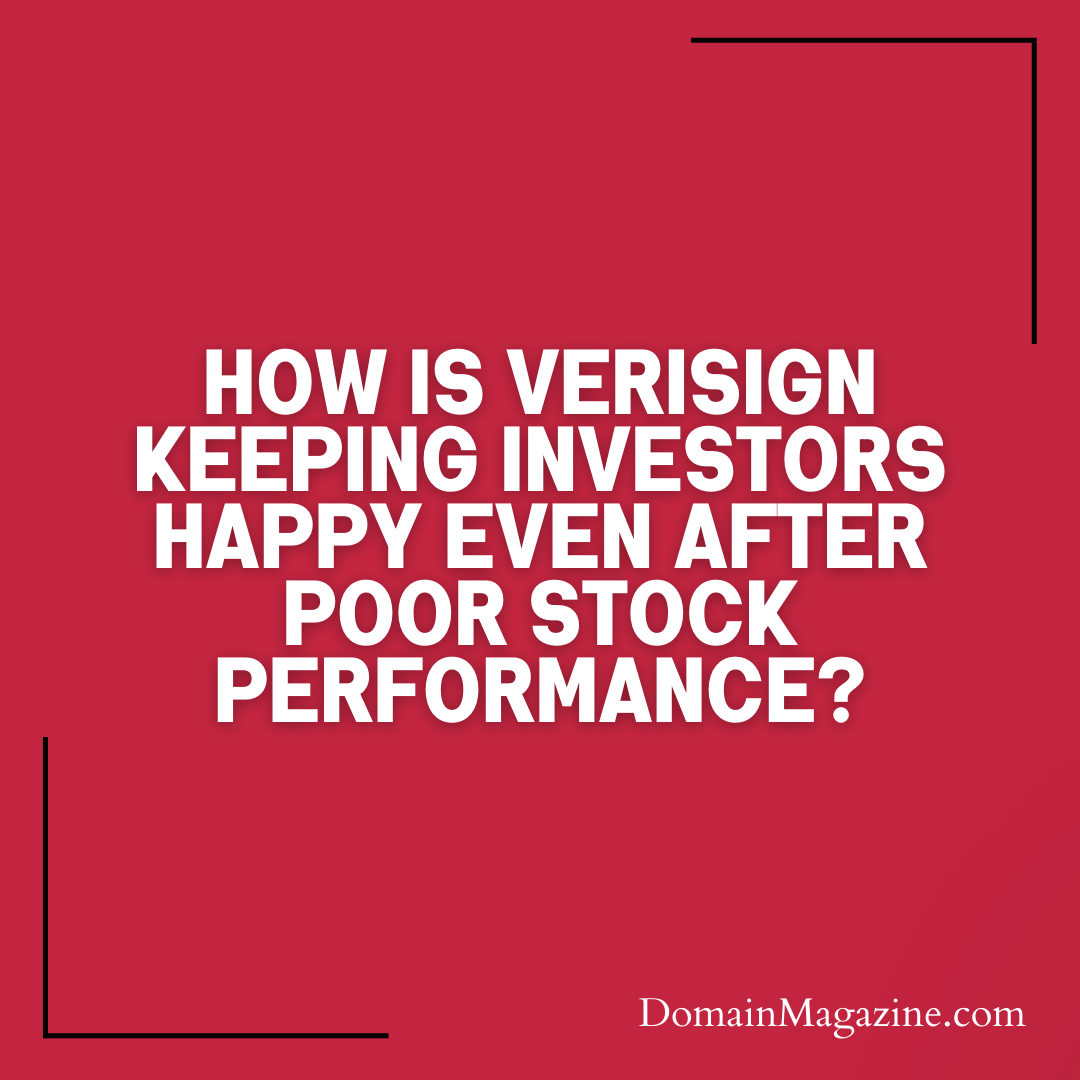If you’ve been following the world of domain names, you’ve probably come across the name VeriSign. This company is a significant player in the domain name industry, known for managing the exclusive rights to the registration of “.com” and “.net” domain names. But here’s the intriguing part: despite its recent stock performance not being spectacular, VeriSign is still managing to keep its investors content. How does it do that? Let’s break it down in simple terms.

What is VeriSign’s Secret Sauce?
VeriSign’s financial performance is often assessed using a metric called ROIC (Return on Invested Capital). ROIC measures how efficiently a company uses the money invested in its business. It’s a crucial gauge of a company’s financial health.
High ROIC: VeriSign has been doing exceptionally well in terms of ROIC. In fact, it has consistently had one of the highest ROIC figures among S&P 500 companies over the past three years. This metric indicates that VeriSign is incredibly efficient at making the most of the capital invested in its operations.
Why High ROIC Matters
You might wonder, why should we care about a fancy metric like ROIC? Well, high ROIC is often a sign that a company is well-run and financially healthy. It’s an indicator that the company is using its resources wisely to generate profits. For investors, this can translate to a promising investment opportunity.
The Stock Market Conundrum
But, here’s where it gets interesting. VeriSign’s stock performance in the market hasn’t exactly been setting the world on fire in recent times. This has raised eyebrows because, typically, high ROIC is associated with strong stock market returns. So, why the disconnect?
The Pandemic Effect
Part of the explanation lies in the peculiar times we’ve been through. VeriSign saw a surge in demand for domain registrations during the COVID-19 pandemic. People and businesses rushed to secure their online presence, and this led to an increase in VeriSign’s profits.
However, as the pandemic subsided, the demand for domain registrations normalized, and VeriSign’s profitability in the most recent quarter took a hit. This downturn in profitability impacted the stock’s performance.
The Long-Term Perspective
Here’s the kicker: while VeriSign’s stock performance hasn’t been stellar in the short term, it’s essential to consider the long-term perspective. The company’s ability to maintain a high ROIC over the years is a strong indicator of its resilience and financial stability.
VeriSign’s Strengths

So, why are investors still looking favorably at VeriSign? One of the company’s core strengths lies in its low-cost business model. The cost to companies for VeriSign to manage domain names and ensure the integrity of the internet is typically a small fraction of their overall expenses. This ensures a steady stream of income for VeriSign.
Furthermore, VeriSign holds exclusive rights from the U.S. Department of Commerce for “.com” and “.net” domain name registrations. This competitive edge, coupled with strong pricing power, keeps VeriSign in a robust position in the market.
The Bottom Line
While VeriSign’s stock might not be the hottest pick of the moment, its financial resilience and steady ROIC make it a compelling option for long-term investors. The company’s ability to weather the ups and downs of the market and maintain its dominance in the domain name industry speaks volumes about its business acumen.
Investing is a game of patience, and VeriSign’s story reminds us that sometimes, the best investments are the ones that stand the test of time. So, if you’re eyeing VeriSign, remember that it’s not about the short sprint but the long marathon.
In conclusion, VeriSign’s ability to keep investors content despite recent stock market fluctuations is a testament to the power of sustained financial strength and a smart business model. It’s a reminder that there’s more to investing than meets the eye, and sometimes, the steady performers are the ones that truly shine.


Join the Discussion